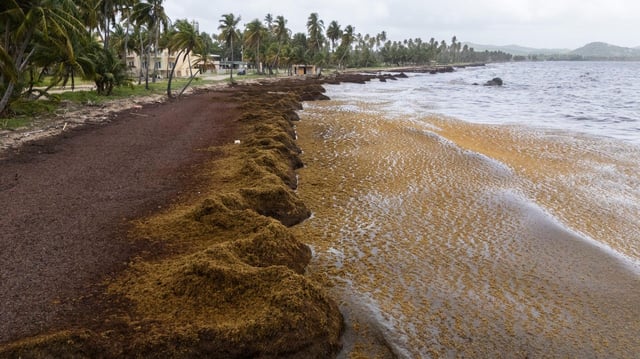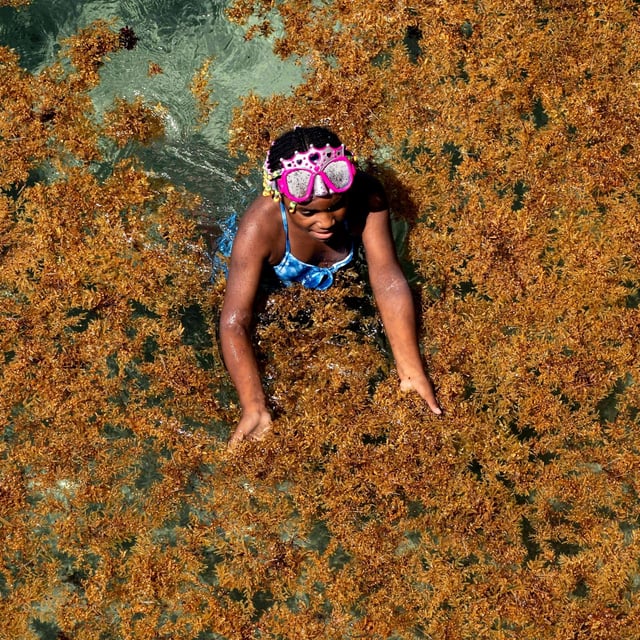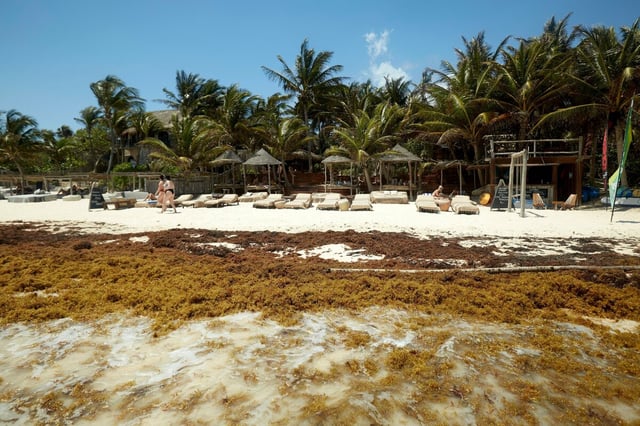Overview
- University of South Florida laboratory data show roughly 38 million tons of Sargassum accumulated in May—the highest volume recorded across the Caribbean Sea, Atlantic and Gulf of Mexico since 2011.
- Decaying algal mats emit toxic gases and foul odors that have forced a school closure in Martinique and posed threats to wildlife from Puerto Rico to Guyana.
- Researchers remain uncertain about the bloom’s rapid growth while probing influences such as sunlight exposure, nutrient runoff, water temperature and changing ocean currents.
- Spring growth cycles typically peak in summer, and scientists forecast even larger Sargassum masses washing ashore across the region in June.
- In response, hotels and local authorities are installing sea barriers, deploying cleanup crews and offering guest refunds or shuttles to unaffected beaches to mitigate tourism losses.



